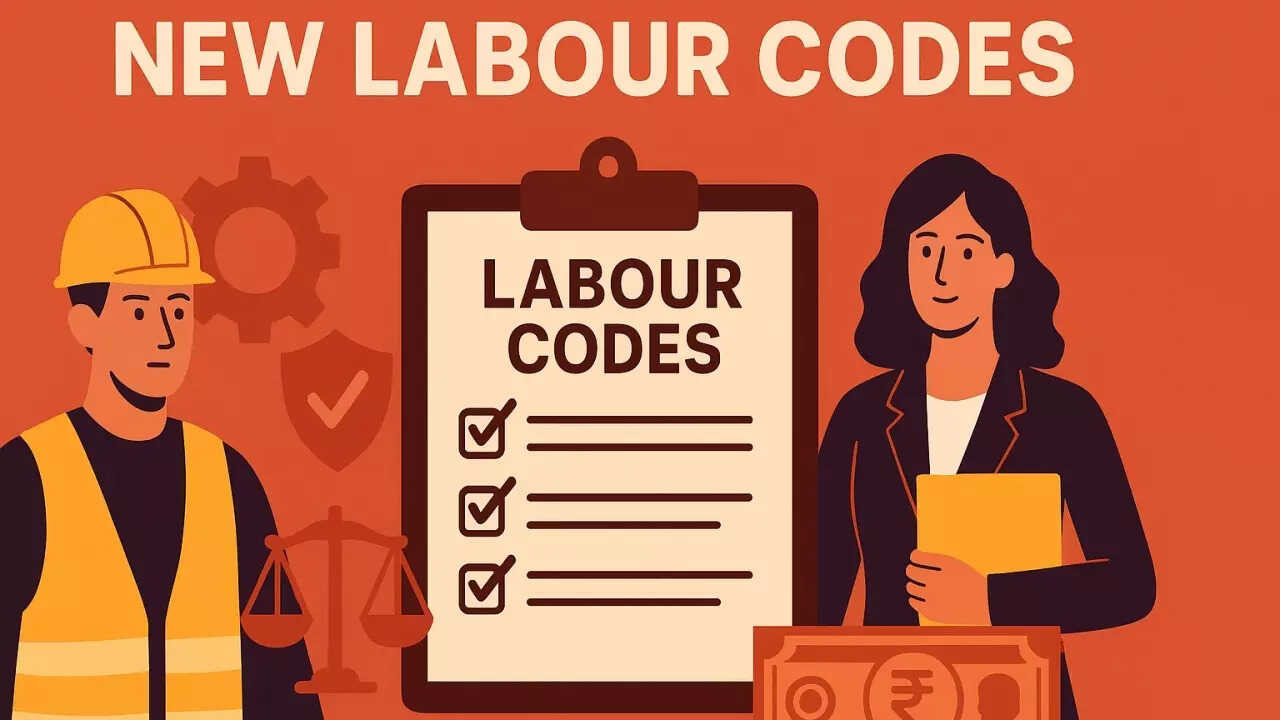India’s new labour codes, effective November 21, 2025, consolidate 29 laws, promising universal minimum wages, enhanced social security for gig workers, and improved safety. While offering businesses flexibility, they also introduce new classifications for employees and workers, impacting benefits and contract labour. Employers must adapt HR and payroll to these significant changes.
Decoding India’s New Labour Codes: A Fresh Start for Workers and Businesses?
India’s employment landscape is on the cusp of a significant transformation. Forget incremental tweaks; we’re talking about a fundamental reshaping of the rules of engagement between employers and employees. The long-awaited new labour codes are finally poised for implementation, promising a modern, streamlined framework designed to boost economic growth while safeguarding worker rights. But what does this all really mean for you, whether you’re clocking in or managing a company? Let’s break it down.
Minimum Wages: Setting a Floor for Fair Compensation
One of the core aims of the new codes is to ensure a basic standard of living for all workers. Forget the current patchwork of state-level minimum wages; the new legislation strives for a nationally determined floor wage. This “floor wage” concept is key. States will still be able to set minimum wages above this level, taking into account regional variations and cost-of-living considerations. The central government will factor in factors like skills, effort, and occupational hazards to make it a reasonable baseline. The ambition is clear: to prevent exploitation and guarantee a dignified minimum income for every worker in the country. This will be a sigh of relief for many unorganized sector workers.
Gratuity Benefits: Easing Access to Retirement Funds
Gratuity, that lump-sum payment received upon retirement or resignation, is getting a makeover. The eligibility requirement for gratuity has been significantly reduced from five years of continuous service to just one year for fixed-term employees. This is a major win for contract workers, who often miss out on this crucial benefit due to their shorter tenures. It not only encourages companies to offer more stable employment, but also provides a more secure future for a larger section of the workforce. It’s a subtle but powerful shift towards greater worker security and incentivizes retention.
Appointment Letters: Formalizing the Employment Relationship
Imagine starting a new job without a formal offer letter outlining your role, responsibilities, and compensation. Sounds risky, right? The new labour codes make the issuance of appointment letters mandatory for all employees. This seemingly small step has a huge impact. A written appointment letter provides clarity, transparency, and legal recourse in case of disputes. It’s a basic yet crucial safeguard that protects both employees and employers by clearly defining the terms of employment from day one.
Layoff Rules: Balancing Business Needs with Worker Security
Layoffs are never easy, but the new labour codes aim to make the process fairer and more transparent. Companies employing less than 300 workers will now have greater flexibility in implementing layoffs, without needing prior government approval. This is intended to ease the burden on smaller businesses and allow them to adapt more quickly to changing market conditions. However, to compensate for this flexibility, the codes also stipulate that laid-off workers receive adequate compensation, ensuring a safety net during periods of unemployment. It’s a delicate balancing act between business agility and worker security, designed to foster a more dynamic and responsive economy.
Social Security for All: Expanding the Safety Net
One of the most ambitious goals of the new labour codes is to extend social security benefits to all workers, including those in the unorganized sector, gig workers, and platform workers. This is a monumental undertaking, as it aims to bring millions of previously unprotected workers into the fold of social security schemes like Employees’ Provident Fund (EPF) and Employees’ State Insurance (ESI). This inclusion will provide access to healthcare, insurance, and retirement benefits, significantly improving the lives and livelihoods of some of the most vulnerable members of the workforce. It’s about recognizing the contributions of all workers and ensuring they have a safety net to fall back on.

What’s Next? Navigating the Implementation
The implementation of these codes will be a complex and multifaceted process. States will need to align their own regulations with the central legislation, and businesses will need to adapt their HR practices and policies to comply with the new requirements. The codes also pave the way for an updated system of compliance with digital record-keeping and simplified inspection processes which will reduce red tape for both companies and government agencies. Clear guidance, training, and support will be essential to ensure a smooth transition and to help both employers and employees understand their rights and responsibilities under the new framework. To further understand the implications, see our detailed guide on employee benefits regulations.
A New Chapter for Indian Labour
The new labour codes represent a bold attempt to modernize India’s labour laws and create a more equitable and productive workforce. While challenges remain, the potential benefits are significant. By setting a floor for fair compensation, expanding social security coverage, and streamlining regulatory processes, these codes could unlock India’s economic potential and improve the lives of millions of workers. The success of these codes hinges on effective implementation, clear communication, and a collaborative approach involving government, employers, and employees. The future of work in India is being rewritten, and it promises to be a more inclusive, secure, and prosperous one.







